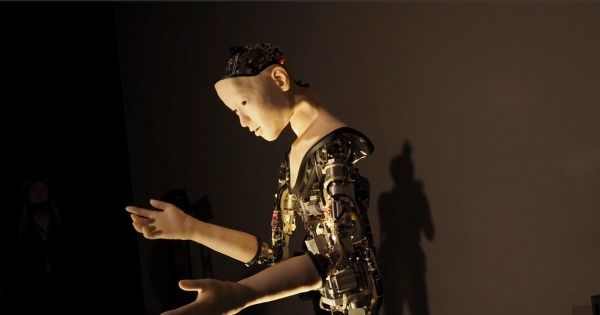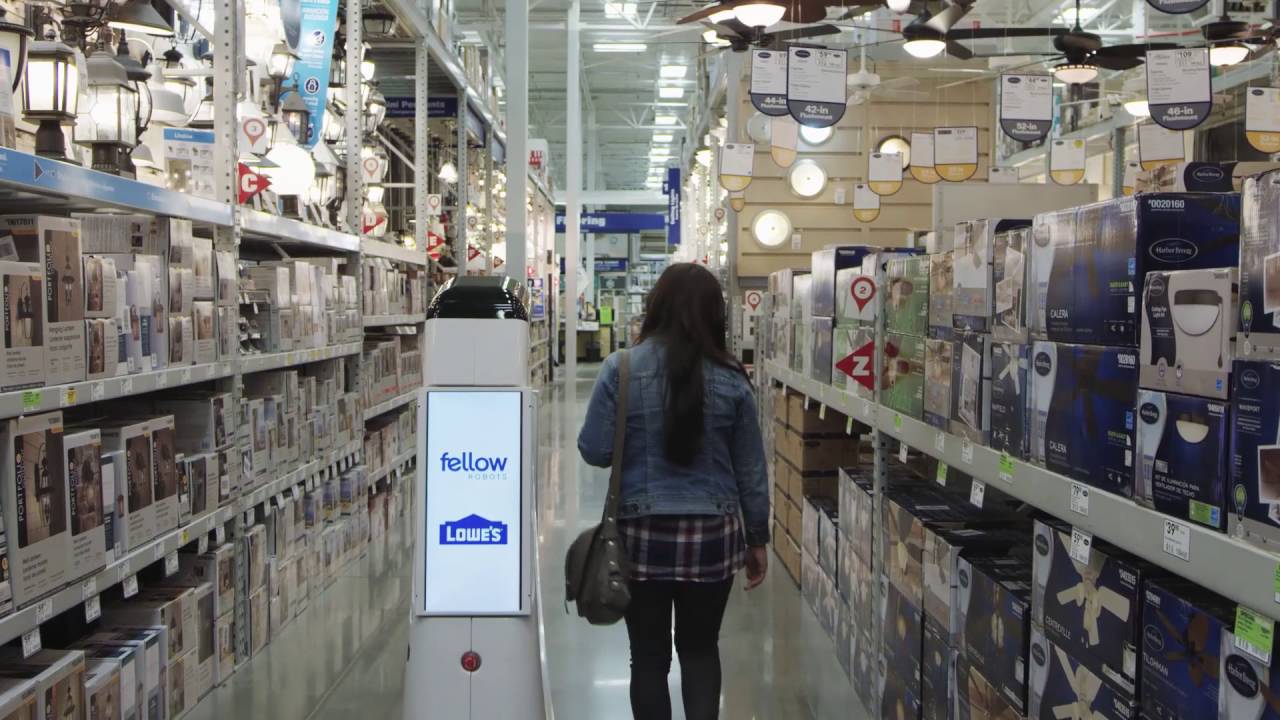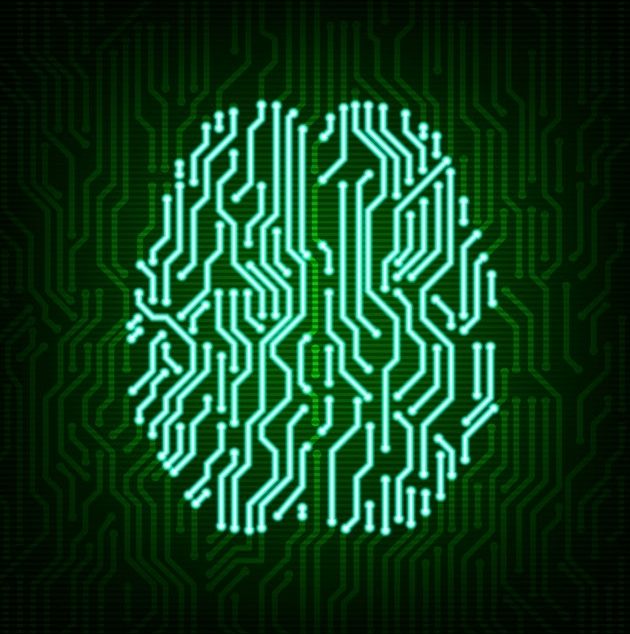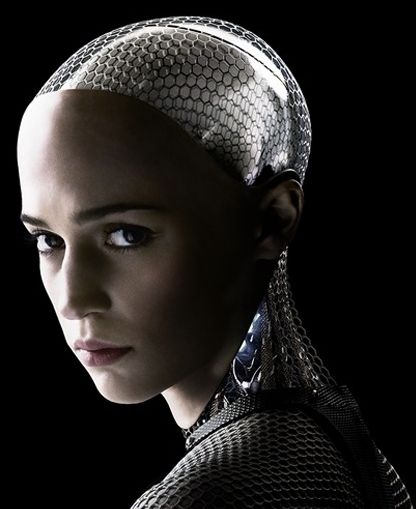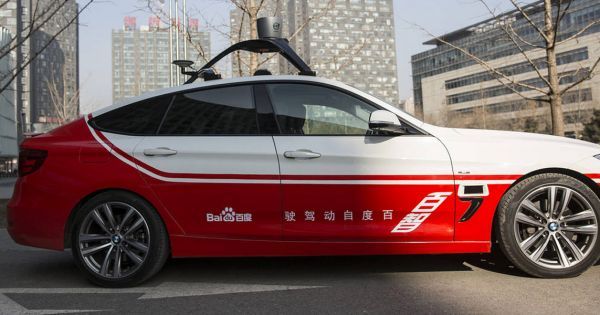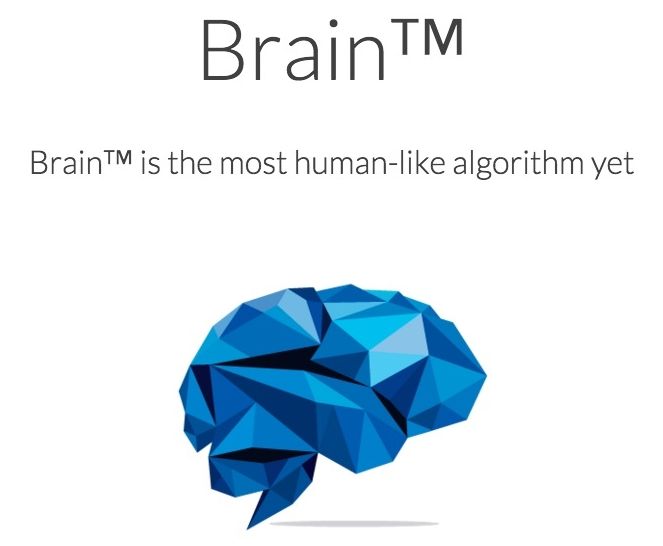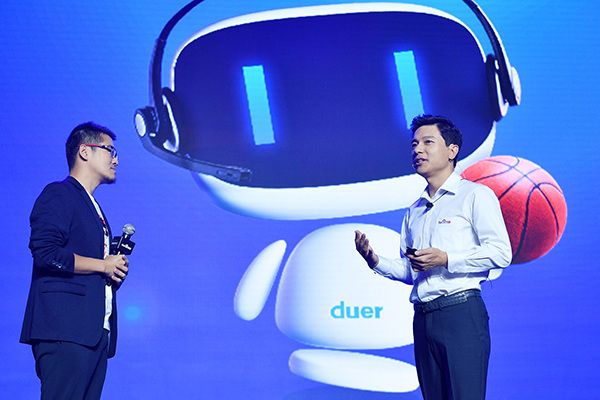[Figure about depicts a layout, showing two ‘somas’, or circuits that simulate the basic functions of a neuron. The green circles play the role of synapses. From presentation of K.K. Likharev, used with permission.]
One possible layout is shown above. Electronic devices called ‘somas’ play the role of the neuron’s cell body, which is to add up the inputs and fire an output. In neuromorphic hardware, somas may mimic neurons with several different levels of sophistication, depending on what is required for the task at hand. For instance, somas may generate spikes (sequences of pulses) just like neurons in the brain. There is growing evidence that sequences of spikes in the brain carry more information than just the average firing rate alone, which previously had been considered the most important quantity. Spikes are carried through the two types of neural wires, axons and dendrites, which are represented by the red and blue lines in figure 2. The green circles are connections between these wires that play the role of synapses. Each of these ‘latching switches’ must be able to hold a ‘weight’, which is encoded in either a variable capacitance or variable resistance. In principle, memristors would be an ideal component here, if one could be developed that could be mass produced. Crucially, all of the crossnet architecture can be implemented in traditional silicon-based (“CMOS”-like) technology. Each crossnet (as shown in the figure) is designed so they can be stacked, with additional wires connecting somas on different layers. In this way, neuromorphic crossnet technology can achieve component densities that rival the human brain.
Likarev’s design is still theoretical, but there are already several neuromorphic chips in production, such as IBM’s TrueNorth chip, which features spiking neurons, and Qualcomm’s “Zeroeth” project. NVIDIA is currently making major investments in deep learning hardware, and the next generation of NVIDIA devices dedicated for deep learning will likely look closer to neuromorphic chips than traditional GPUs. Another important player is the startup Nervana systems, which was recently acquired by Intel for $400 million. Many governments are are investing large amounts of money into academic research on neuromorphic chips as well. Prominent examples include the EU’s BrainScaleS project, the UK’s SpiNNaker project, and DARPA’s SyNAPSE program.
Read more
